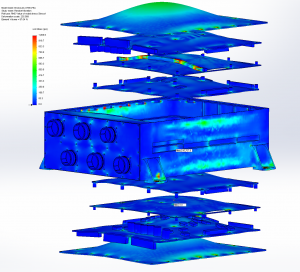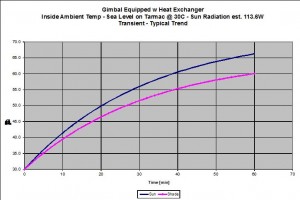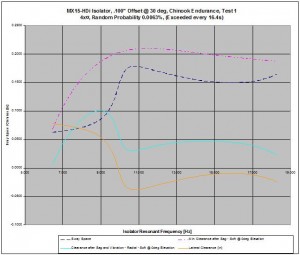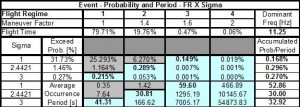Structural Analysis

FEA Modal & Dynamic Response Analysis
FEA is used during the design process to assess the strength and stiffness, response of the structure to various shock and vibration environments including:
- Statics Analysis
- Vibrations including harmonic, random, sine-on-random, transient
- Shock including operational, crash safety, shipping
Structural Substantiation
Comprehensive analysis to ensure qualification and certification requirements such as: RTCA/DO-160, MIL-STD-810
Thermal Analysis and Heat Transfer
FEA and analytical models developed for various electronic enclosures and gimbals, from critical components to the overall system. Steady state and transient analysis determine the effectiveness of dissipating heat while accounting for: ambient temperature, altitude, Sun exposure, location on the aircraft, mounting type, air flow, presence of heat exchangers.

Thermal modeling altitude – steady state

Thermal Modeling – Transient
Analytical Models, Closed Form Solutions and Algorithms
Various analytical models have been developed to support feasibility studies and conceptual design for effective assessment. The models are also used to verify FEA, boundary conditions and results.
- Response analysis of Passive Isolation Systems and Structures to shocks and vibrations including harmonic and sine-on-random combinations
- Fatigue Analysis including response to random vibration and probability distribution
- Thermal modelling
- Electro-magnetic forces for Linear Torque Motors
- Solid mechanics
- System kinematics and dynamics

Isolator Response – Sine-on-Random

Fatigue Analysis

Shaker Table Simulation
Optimizations
20/20 Engineering strives to provide customers with the best solutions in a timely manner. FEA and Analytical modelling are used during the design process to meet and improve critical characteristics of the system.
- Weight and strength
- Resonant frequencies
- Response to shock and vibrations
- Stability performance, LOS jitter reduction
- Thermal characteristics







